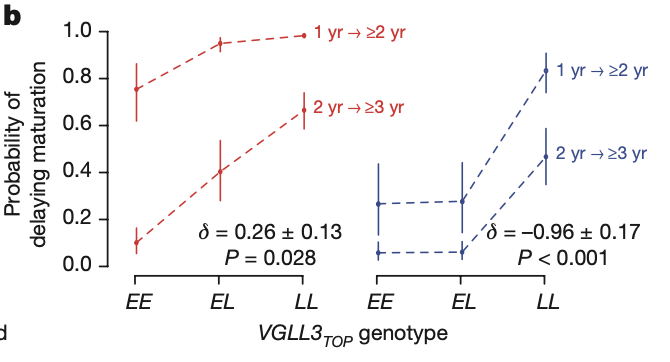GenArchi

Context. Ability of species to respond to environmental changes via adaptation of life history traits is related to several factors such as the rate of change, the standing genetic variation underlying fitness-related traits, but also the genetic architecture of these traits.
Rationale and aim. In Atlantic salmon, the genetic architecture of traits related to maturation, a major life history trait, has been demonstrated with a major locus explaining a high proportion of the variance of the trait. Moreover, patterns of sex-dependent dominance have been showed to be variable between populations. The objective of the project is thus to better understand the consequences of different genetic architecture (e.g. polygenic vs major locus, dominance patterns) underlying maturation on the evolution of life history traits and population dynamics of Atlantic salmon facing selective pressure such as climate change and exploitation.
Methods. A simulation approach, i.e. an individual-based demo-genetic model is used to simulate the life cycle of Atlantic salmon, together with the genetic basis of maturation and environmental conditions. The model will be applied and calibrated to several populations across Europe that cover a range of environmental conditions, life history diversity and genetic diversity
Funding. This project is funded by the ERC.